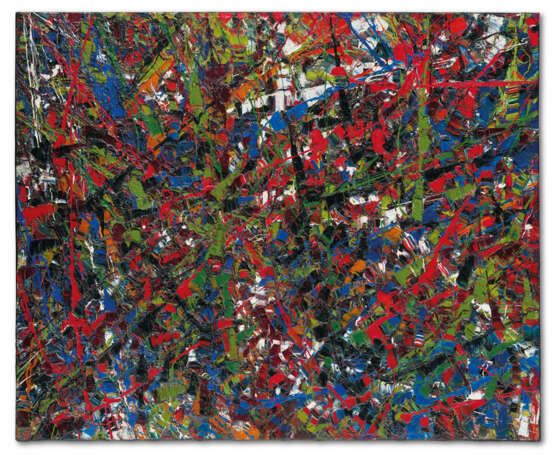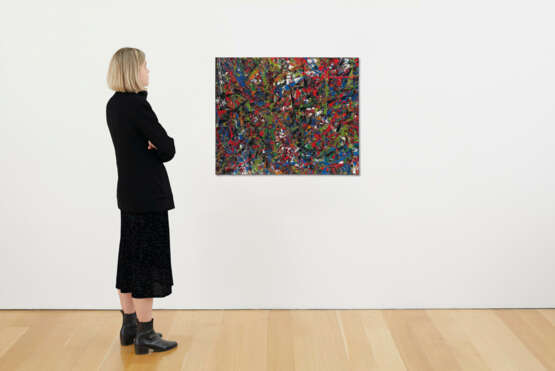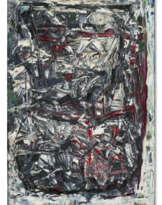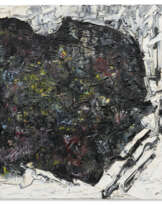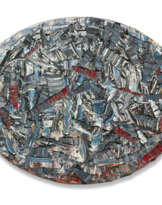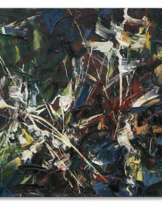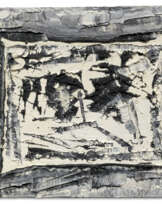ID 832043
Лот 11 | Jean Paul Riopelle (1923-2002)
Оценочная стоимость
€ 700 000 – 1 000 000
Sans titre
signé et daté 'Riopelle 53' (en bas à droite)
huile sur toile
81 x 100 cm.
Peint en 1953
signed and dated 'Riopelle 53' (lower right)
oil on canvas
31 7/8 x 39 3/8 in.
Painted in 1953
Provenance
Jacques Dennery, Paris (certainement acquis directement auprès de l'artiste).
Gimpel Fils, Ltd., Londres (acquis auprès de la famille).
Acquis auprès de celle-ci par le propriétaire actuel, le 12 janvier 1983.
Literature
R. Bernier, Jean Paul Riopelle, des visions d'Amérique, Paris, 1997 (illustré en couleurs, p. 88).
Y. Riopelle, Jean Paul Riopelle, catalogue raisonné, 1939-1953, Tome I, Montréal, 1999, p. 387, no. 1953.028H.1953 (illustré en couleurs, p. 271).
Special notice
Artist's Resale Right ("droit de Suite").
If the Artist's Resale Right Regulations 2006 apply to this lot, the buyer also agrees to pay us an amount equal to the resale royalty provided for in those Regulations, and we undertake to the buyer to pay such amount to the artist's collection agent.
ƒ: In addition to the regular Buyer’s premium, a commission of 5.5%
inclusive of VAT of the hammer price will be charged to the buyer.
It will be refunded to the Buyer upon proof of export of the lot
outside the European Union within the legal time limit.
(Please refer to section VAT refunds)
Post lot text
1953 marque le tournant charnière de l’œuvre de Jean Paul Riopelle. Durant cette année, son style s’affirme ; le dripping laisse place à des compositions plus structurées et moins organiques. Un rythme s’installe, les couleurs explosent, proposant désormais des mosaïques aux tonalités chatoyantes et vives. Riopelle expérimente avec son couteau, il l’utilise de façon plus assurée, et ses toiles, comme Sans titre (1953), révèlent une concentration intérieure et méticuleuse. C’est d’ailleurs durant cette même année 1953 que Riopelle est consacré à l’échelle internationale. Son affranchissement progressif des contraintes artistiques de son temps mais aussi de ses influences parisiennes, lui permettent d’être successivement exposé à Londres, puis à New York au Solomon R. Guggenheim Museum et d’intégrer l’écurie de la célèbre Galerie Pierre Matisse. Durant cette année, le peintre ne réalise pas moins d’une soixantaine d’œuvres sur toile, témoignant de l’assurance croissante de son geste et de sa palette. Si son canevas de base est fidèlement recouvert de noir, tel que dans Sans titre (1953), les autres couleurs apportent à la toile une autre dimension. Elles confèrent au tableau une portée lyrique, bien au-delà de sa composition technique. Riopelle nous offre ici une vision de fin d’été, où le vert, le rouge et le bleu laissent poindre quelques touches bientôt automnales d’une nature brune et orangée. Le noir quant à lui n’est plus le simple réceptacle des premières couleurs couchées sur la toile : il en devient le liant, le séparateur géométrique et structurel de la composition ainsi créée. Ces lignes de fuites et ces horizons ne donnent alors plus simplement la vision d’une patte artistique nouvellement découverte mais participent véritablement à faire rentrer cette œuvre dans une sphère nouvelle. Si La Nuit Bleue et La Forêt de 1953 sont souvent considérées comme les œuvres phares de cette année-là, il apparaît toutefois bien certain que Sans titre (1953) participe totalement à ce feu juvénile et créateur dont Riopelle ne se défait pas. Sa peinture est plus vivante que jamais, imprégnée d’oxymores entre lumière et obscurité, couleurs chaudes et froides en un même espace et couverte de subtils dripping éparses qui côtoient des aplats assurés. Cette toile regorge d’énergie, de cette transe dont parle lui-même le peintre et qui, loin de le reclure dans son environnement créateur, le rapproche un peu plus du spectateur. Ce dernier découvre alors la vive ardeur de l’artiste, éclairée et profondément joyeuse au travers de ce tableau. Sans titre (1953) est peut être, au fond, un hymne de Riopelle à la vie, aux saisons et à la nature, comme le témoin du feu intérieur qui anime le peintre et dont les toiles, véritables fenêtres sur cette énergie créatrice, donnent à qui les contemple un peu de cet élan vital.
1953 marked a turning point in the work of Jean Paul Riopelle. During this decisive year, his style asserted itself; drippings gave way to more structured and less organic compositions. A rhythm was established, colours exploded, offering mosaics in shimmering and vivid tones. Riopelle experimented with the knife technique, using it in a more confident way, and his paintings, like Untitled (1953), revealed an inner and meticulous concentration. It was during this same year, 1953, that Riopelle received international recognition. His progressive liberation from the artistic constraints of his time, but also from his Parisian influences, allowed him to be successively exhibited in London, then in New York at The Solomon R. Guggenheim Museum and to join the stable of the famous Pierre Matisse Gallery. During this year, the painter produced no less than 60 works on canvas, testifying to the growing confidence of his gesture and his palette. If his basic canvas is faithfully covered with black, as in Untitled (1953), the other colours bring another dimension to the canvas. They convey a lyrical scope to the painting, well beyond its technical composition. Riopelle offers us here a vision of late summer, where the greens, reds and blues give way to a few autumnal touches of a brown and orange nature. As for black, it is no longer the simple receptacle of the first colours on the canvas: it becomes the binder, the geometric and structural separator of the composition thus created. These lines of escape and these horizons do not simply give the vision of a newly discovered artistic style but truly participate in bringing this work into a new sphere. Although La Nuit Bleue and La Forêt (1953) are often considered the key works of that year, it is clear that Untitled (1953) is totally in osmosis with this youthful and creative fire that Riopelle never gave up. His painting is more alive than ever, impregnated with oxymorons between light and darkness, warm and cold colours in the same space, and covered with subtle drippings that are scattered alongside solid overtones. This canvas is full of energy. It conveys this trance of which the painter himself speaks and which, far from recluding him in his creative environment, brings him a little closer to the spectator. The latter then discovers the artist's lively ardour, illuminated and deeply joyful through this painting. Untitled (1953) is perhaps, in essence, a hymn by Riopelle to life, to the seasons and to nature—as a witness to the inner fire that animates the painter and whose canvases, true windows on this creative energy, offer to those who contemplate them a little of this vital impulse.
| Автор: | Жан-Поль Риопель (1923 - 2002) |
|---|---|
| Художественный стиль: | Послевоенное искусство |
| Место происхождения: | Канада |
| Категория аукционного дома: | Картины |
| Автор: | Жан-Поль Риопель (1923 - 2002) |
|---|---|
| Художественный стиль: | Послевоенное искусство |
| Место происхождения: | Канада |
| Категория аукционного дома: | Картины |
| Адрес торгов |
CHRISTIE'S 8 King Street, St. James's SW1Y 6QT London Великобритания | |
|---|---|---|
| Предосмотр |
| |
| Телефон | +44 (0)20 7839 9060 | |
| Комиссия | see on Website | |
| Условия использования | Условия использования |
